- Gas Fireplace Maintenance
- Gas Fireplace Maintenance
- Chimney Cap Installation
- Fire Hazards with Dryer Vent Cleaning
Chimney Sweep in Meggett, SC
There's something alluring about chimneys - whether they're old or new, they have an inherent charm that adds architectural flair to your home. Perhaps more importantly, fireplaces keep you and your family warm and cozy during cold South Carolina winters. Who doesn't love gathering in front of the fire with friends to enjoy a fun board game or a few rounds of drinks?
Anyone who owns a chimney should most certainly enjoy it. But you should know that your chimney isn't there to simply make your house look special - its primary role is to keep you and your family safe. In fact, when you're relaxing in front of a cozy fire with your favorite book, your chimney is hard at work making sure the fire's harmful fumes are directed up and away from you and your home.
Unfortunately, when you fail to clean your fireplace and the flue lining it, things can heat up in a matter of moments - and not in a good way. The truth is that unclean fireplaces can lead to chimney fires, which are known for causing horrible property damage and even harm to people. Chimney fires can be explosive, with flames shooting from the top of your chimney and dense smoke billowing out into the street. It's a horrible situation to endure. Fortunately, homeowners in South Carolina can rely on a chimney sweep in Meggett, SC, to keep their chimneys clean and in great working condition. That's where Flowertown Gas Fireplace and Chimney Service comes into play - to help you enjoy your home's fireplace without worrying about worst-case scenarios.
Service Areas

Stay Safe, Warm, and Cozy withFlowertown Gas Fireplace and Chimney Service
As a local, family-owned chimney sweep company in South Carolina, our team is dedicated to keeping gas fireplaces, wood burning fireplaces, and dryer vents clean and in great working condition for homeowners. By letting our family serve your family, you can rest easy knowing your fireplace and chimney are ready and waiting for you to enjoy this winter, whether you have a gas fireplace with logs or a more traditional wood burning alternative.
Our mission is to serve our customers with superior chimney and gas fireplace service by providing years of knowledge, time-tested solutions, and customer education to build trust and customer loyalty. We offer a range of chimney sweep services in Meggett, SC, including the following:
- Gas Fireplace Service, Repairs, & Installation
- Gas Log Service, Repair, & Installation
- Chimney Sweep Service & Cleaning
- Wood Fireplace Service & Repairs
- Exterior Chimney Cap Sales & Installation
- Chimney Inspections
Unlike some chimney sweep companies in South Carolina, our team has been certified to ensure we know how to install, maintain, and repair all types of fireplace appliances. In fact, over our more than 12 years of experience in the fireplace and hearth industry, we've obtained a few credentials along the way, including:
CSIA Certified Chimney Sweep
Homeowners looking for reliable and knowledgeable chimney and venting professionals have trusted the Chimney Safety Institute of America's (CSIA) endorsements for over three decades. By selecting a technician who is certified by CSIA, you can rest assured that they possess the necessary expertise, qualifications, and experience to provide you with top-notch chimney sweep service in South Carolina.
NFI Certified Gas Hearth and Wood Burning Hearth Professional
When it comes to planning and installing fireplaces, stoves, and venting systems, skill and technical knowledge are absolutely crucial. There are countless decisions that must be made, including determining the appropriate floor protection, appliance sizing and placement, and venting system compatibility and height.
For the most reliable and proper installation, it's highly recommended that you seek the guidance of a specialist. The National Fireplace Institute is a trusted, independent, non-profit certification agency that has established the highest standards for certification in the hearth industry. Those who pass the rigorous examination covering the fundamentals of proper installation are awarded NFI Specialist Certification, ensuring you can trust their expertise.
Now that you know a little bit about our company and our mission, it's time to learn more about the fireplace and hearth services we offer to homeowners in South Carolina.

Keeping Your Home Safe with Gas Fireplace Maintenance in Meggett, SC
Gas fireplaces are one of the most common features of homes in South Carolina and bring a special ambiance to any room. As with any appliance in your home, however, it's important to keep your gas fireplace maintained throughout the year.
It is crucial to have your gas hearth appliances serviced annually. At Flowertown Gas Fireplace and Chimney Service, our team of experts will thoroughly clean, service, and inspect your gas hearth appliance, as well as perform any necessary repairs. If you notice black soot on your logs or they are not burning cleanly, it is imperative to shut down the appliance to schedule gas fireplace maintenance or repair ASAP.
It's important to note that your gas logs should only be serviced and repaired by a certified gas specialist from the NFI or National Fireplace Institute. There's nothing wrong with hiring a friend, but if they don't know what they're doing, your safety may be at risk.
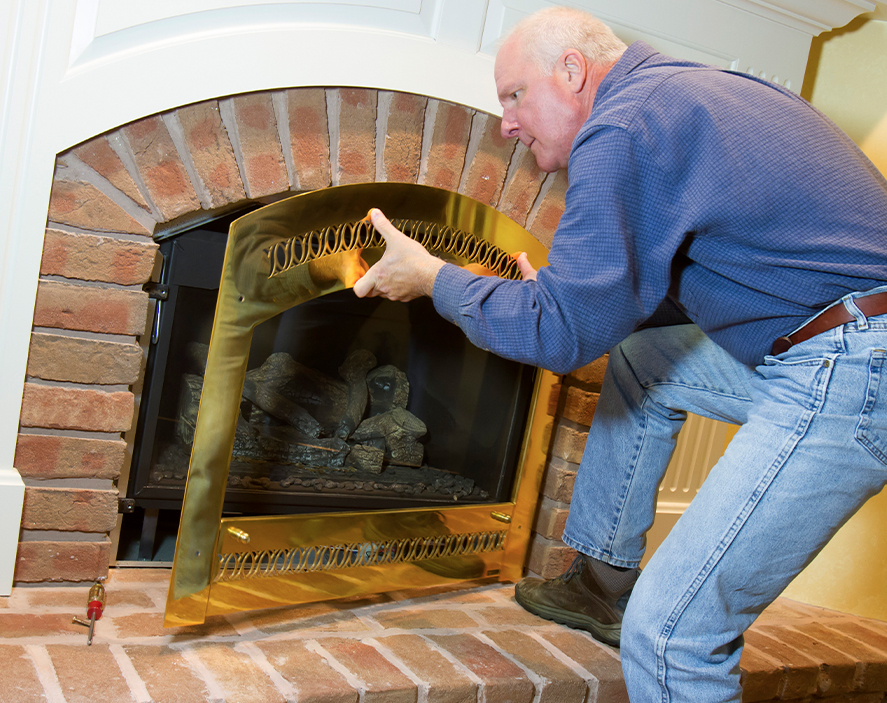

Why Should You Have Your Gas Fireplace Serviced
At Flowertown Gas Fireplace and Chimney Service, one of the most common questions we get is whether or not a customer really needs to have their fireplace serviced. The two biggest reasons for doing so are appliance reliability and safety. The truth is it's very important to adhere to the manufacturer's guidelines and have the system inspected and serviced annually by a certified gas specialist.
Failure to do so could result in the production of lethal carbon monoxide gas, which is odorless and requires special equipment to detect. Additionally, gas leaks and improper venting can pose serious hazards, which is why inspection of the venting system, chimney, and fireplace is imperative. With proper maintenance and regular checks, you can enjoy the warmth of your gas hearth system with confidence and peace of mind.
If you haven't kept up with gas fireplace maintenance and believe something is wrong with your hearth or chimney, consider gas fireplace repair in Meggett, SC.
What About Un-Vented Gas Fireplaces?
Heating systems that don't require vents are like regular home heating systems. But they need to be working properly and checked often. It's a good idea to open a window if you're using a vent-free heater. There are rules about when you can use them. It's a good idea to have an expert check your heater's location. Sometimes, people don't know how to use their fireplace or heater correctly - and that's OK. At Flowertown Gas Fireplace and Chimney, we're happy to answer questions and give you tips so you can safely enjoy your gas fireplace.

Common Signs You Need Gas Fireplace Repair
Whether you have a vented or un-vented gas fireplace, it's important to know when you need maintenance or repairs. Keep these signs in mind, especially as you approach fireplace season.

Burning Smells
If you detect any unusual odors emanating from your gas fireplace, it is important to take action. While some odors may not be a cause for concern, the smell of gas or burning wires should be taken seriously. To ensure your safety, turn off the fireplace and immediately open windows to let in fresh air. Be sure to also call a certified chimney sweeping company like Flowertown to repair and resolve any further issues. In the event of a suspected gas leak, evacuate your home immediately and dial 911 for assistance.

Your Gas Fireplace Turns On and Off
If your custom gas fireplace is turning on and then quickly turning off, this is a serious issue that requires immediate attention. There can be multiple reasons for this malfunction, so it's best to contact a trustworthy chimney sweep in South Carolina who specializes in gas fireplaces. Turn off the unit and wait for the technician to arrive to prevent any further damage.

Buildup of Soot
It's normal to wipe off soot from various areas of your fireplace while you're cleaning. However, if you notice excessive amounts of soot, you're dealing with an underlying problem that needs professional attention.

Pilot Light Malfunctions
If your gas fireplace's pilot light is not working properly, it could indicate a potential issue with the wiring, gas valves, or thermostat. Keep an eye out for any inconsistencies in its performance.
Reliable Wood Fireplace Maintenance in Meggett, SC
While gas fireplaces are more common and often easier to operate, wood fireplaces have their own unique ambiance and allure. If you're like us, nothing sounds better than curling up in front of a crackling fire on a cold winter's night with some hot cocoa and a good book. Unfortunately, when you fail to maintain your wood fireplace and are reluctant to have it repaired, you're putting your safety on the line.
That's why we offer top-notch chimney cleaning services at Flowertown Gas Fireplace & Chimney Service. Our certified hearth professionals will thoroughly clean your chimney, removing any creosote buildup and inspecting all vital components to ensure everything is in proper working order. Don't take any chances when it comes to the safety of your home - trust us to keep your chimney in tip-top shape.
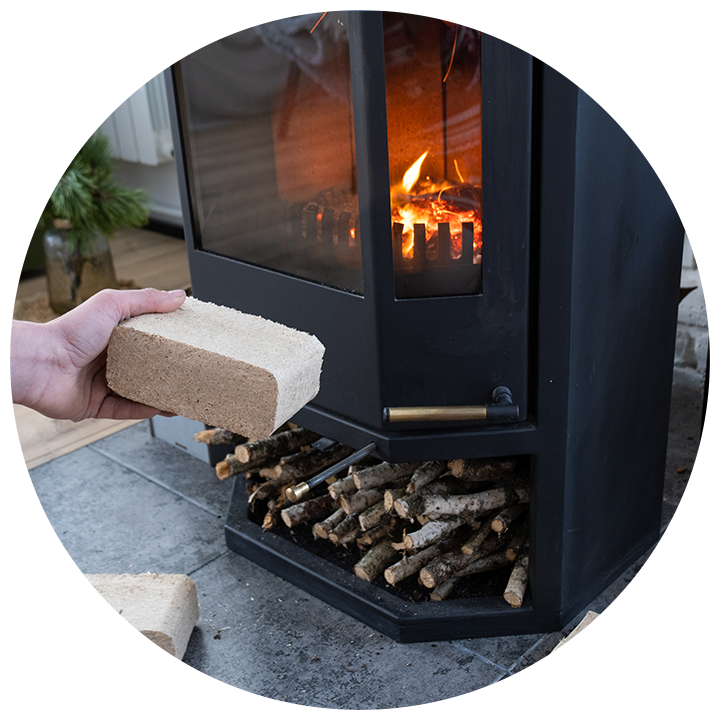
Why Should You Have Your Wood Fireplace Inspected by a Chimney Sweep?
There are several compelling reasons why you should have your system inspected by our team. As we mentioned earlier, your chimney is likely to accumulate creosote deposits, which can pose a serious fire hazard. However, with our chimney and fireplace sweeping services, you can significantly reduce this risk. Plus, there may be hidden defects in your system, such as within the flue or smoke chamber, which are difficult to detect without professional inspection.
Suppose you are a new homeowner or have never had your system inspected by a certified chimney sweeper in South Carolina. In that case, it's time to call Flowertown Gas Fireplace & Chimney Service. Our experts can provide the necessary maintenance and recommendations to ensure your system is safe and functional. Whether you need an inspection, maintenance, or wood fireplace repair, our team is ready and waiting to help.

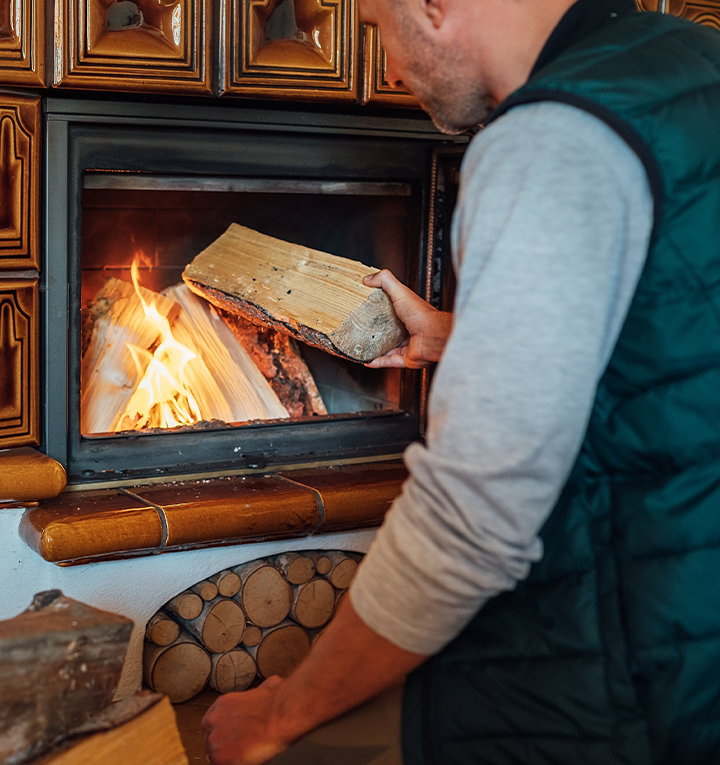
Why Should You Have Your Wood Fireplace Inspected by a Chimney Sweep?
There are several compelling reasons why you should have your system inspected by our team. As we mentioned earlier, your chimney is likely to accumulate creosote deposits, which can pose a serious fire hazard. However, with our chimney and fireplace sweeping services, you can significantly reduce this risk. Plus, there may be hidden defects in your system, such as within the flue or smoke chamber, which are difficult to detect without professional inspection.
Suppose you are a new homeowner or have never had your system inspected by a certified chimney sweeper in South Carolina. In that case, it's time to call Flowertown Gas Fireplace & Chimney Service. Our experts can provide the necessary maintenance and recommendations to ensure your system is safe and functional. Whether you need an inspection, maintenance, or wood fireplace repair, our team is ready and waiting to help.
Essential Wood Burning Fireplace Safety Tips
Having a wood fireplace is a wonderful addition to any home, but it needs to be maintained and repaired, or else it can be very hazardous to your family. Try following these safety tips when enjoying your wood stove or fireplace.

Keep a Fire Extinguisher Nearby
To increase the likelihood of effectively controlling a fire and preventing it from spreading, it is important to have a fire extinguisher nearby. This can significantly reduce the response time in the event of a fire, as every second counts.
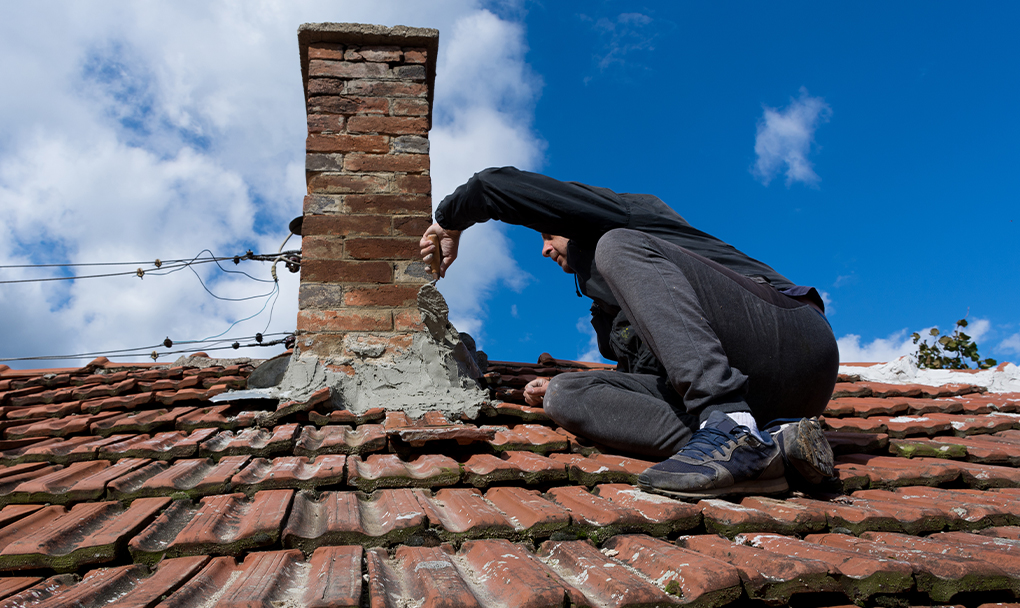
Look for Chimney Cracks
Try to regularly inspect your chimney for any cracks, obstructions, or signs of damage. Cracks can be particularly dangerous, as they can allow heat, smoke, and harmful gases to escape into your home. Cracks can also serve as an entry point for water, which can be particularly harmful.

Talk to Your Family
To ensure safety around your wood burning fireplace, it's essential to educate your family, especially kids, about the potential hazards of fire and the importance of responsible behavior. By teaching them wood fireplace safety measures, you'll create a secure environment for everyone in your house.
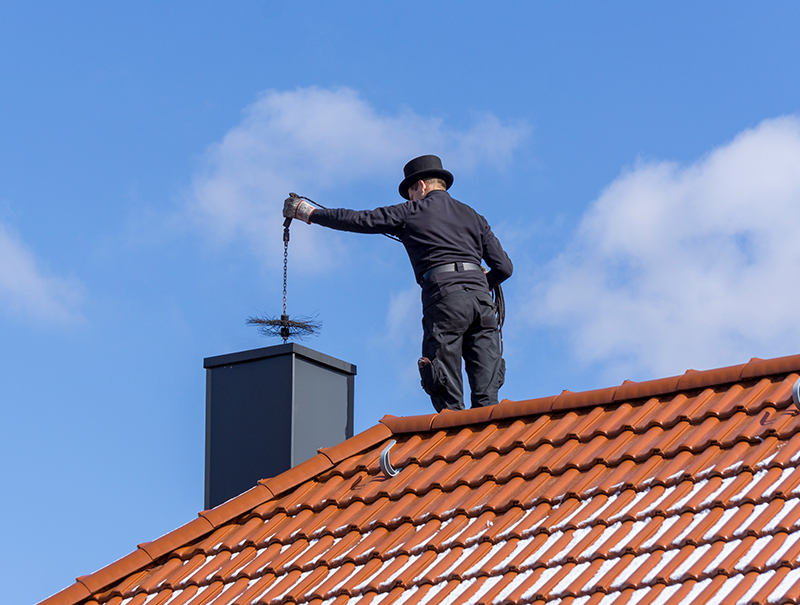
Have Your Chimney Inspected by a Seasoned Chimney Sweep in South Carolina
Regular chimney inspections and cleanings prioritize safety and maintenance while providing peace of mind and reducing the risk of chimney fires. Plus, by having your wood fireplace inspected, you'll have peace of mind knowing it works when weather starts to freeze.
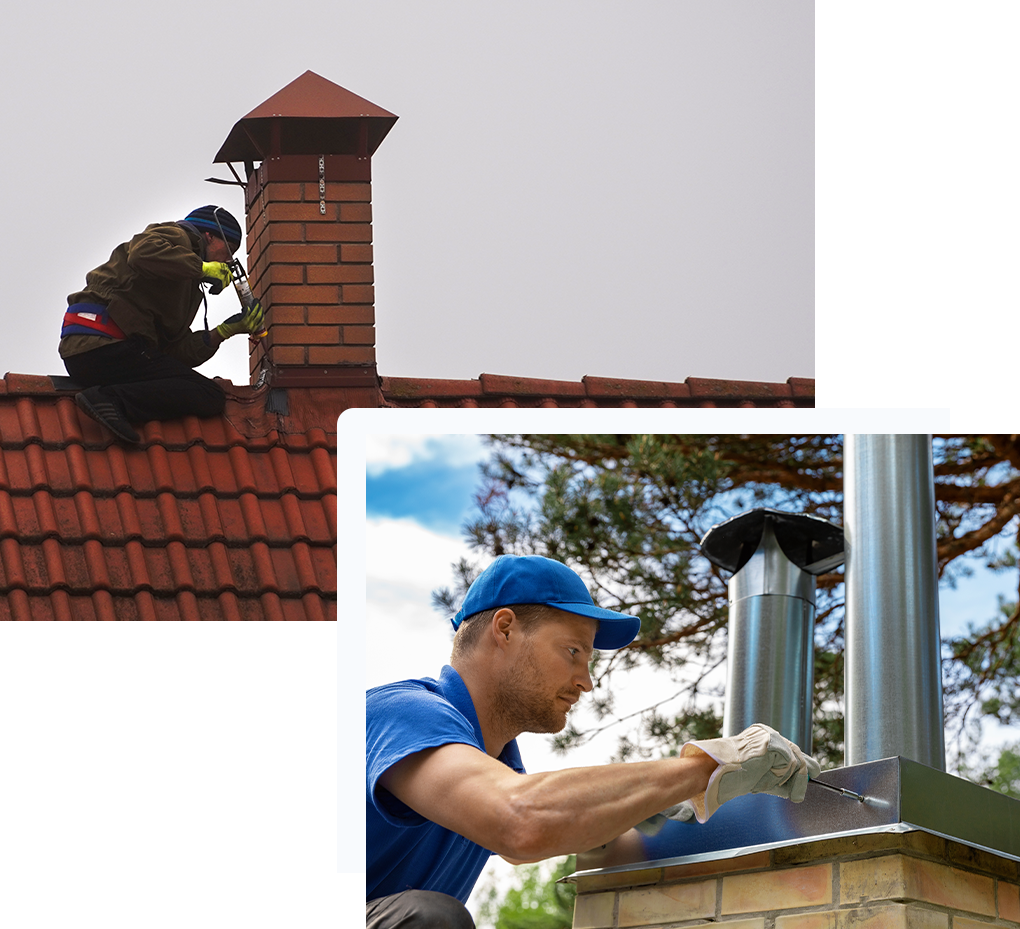
Protect Your Property with Chimney Cap Installation in Meggett, SC
If you've ever looked at a house and noted how great the top of their chimney looked, it's probably because they had an attractive chimney cap. Chimney caps and chase pans play a crucial role in both the functionality of a chimney system and the aesthetic appeal of a home's exterior. A well-designed chimney cap safeguards the chimney from animal intrusion, minimizes wind-induced downdraft, and is an essential component in preventing water entry, which can cause significant damage to chimneys.
If you're looking to add or replace your current chimney cap, you're in the right place. Our collection of custom chimney caps comes in a variety of styles and colors to match or supplement your home's beauty. Of course, as professional chimney sweepers in South Carolina, we also offer chimney cap repair and water prevention options where necessary.
How Do You Know When a Chimney Cap Needs Maintenance?
Your home's chimney cap is likely the highest point of your home, making it an easy feature to forget about when it comes to yearly maintenance or repair. That's unfortunate, because even small damage to your chimney and its cap can allow debris and water to enter. Do yourself a favor and examine your chimney cap regularly for the following red flags:
- Visible Cracks
- Loose Bricks
- Tiles Falling from Chimney
- Cracked Mortar Joints
- Rust in Fireplace
- More
If you notice any of the following signs, you should call Flowertown Gas Fireplace & Chimney Service for expert chimney cap repair.


Avoid Hidden Fire Hazards with Dryer Vent Cleaning in Meggett, SC
Have you noticed that it's been taking longer to dry your clothes after washing them? If so, your dryer vent might need to be cleaned - and we're not just talking about the screen you pull out to remove lint. But why?
Regular cleaning of your dryer vents is a must for many reasons, but primarily to prevent lint buildup that can lead to house fires and extend your appliance's lifespan. Dryer vent cleaning is especially important if you tend to leave home while your dryer is in use, as a fire could ignite in your absence. Neglecting proper dryer vent cleaning not only wastes energy but also causes longer drying times and increases the likelihood of machine malfunctions.
Unsure whether you need dryer vent cleaning from Flowertown Gas Fireplace & Chimney Service? Call our office today for an inspection - it's always better to be safe than sorry. You can also keep an eye out for signs like:
- Burning Smells
- Extra-Long Dry Times
- Your Clothes are Unusually Hot
- Your Lint Flap Won't Open
- Your Laundry Room is Hotter Than Usual
If you notice one or more of the red flags above, you should act fast. Flowertown chimney sweeps are fully equipped to provide a comprehensive dryer vent cleaning service for all brands of dryers, including gas, electric, and high-efficiency machines.
The Premier Choice for DRX9000 Therapy in New Jersey
At Orlando Physical Therapy, we offer a comprehensive approach that combines Physical Therapy, Massage, and Acupuncture to promote overall wellness of mind and body. To help provide relief for patients with serious back problems, we now offer spinal decompression using the state-of-the-art DRX 9000. With the help of our licensed therapists, our goal is to guide you toward optimal physical function rather than simply alleviating your pain.
With our proven track record of success, we have helped many patients enhance their quality of life, and we look forward to doing the same for you. If you're in need of sciatica treatment in Charleston, SC, herniated disc therapy, or a non-surgical solution for a different back issue, know that relief is in sight. Contact our office today and take the first step back to living a normal life.
Request a Quote

Latest News in Meggett, SC
Disclaimer:


 843-990-2733
843-990-2733